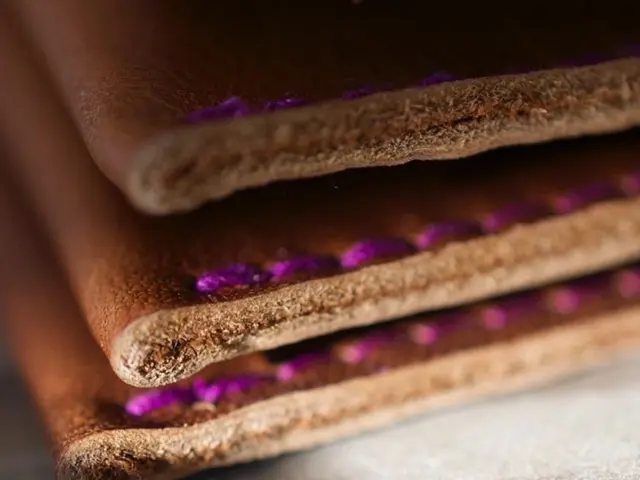Navigating Home Purchases: Understanding Key Construction Eras to Avoid Unforeseen Costs
While Purchasing a Residence, Bear in Mind the Calendar Year
Get ready to ride the rollercoaster of home buying! The year of construction can make or break your investment, and here's why. Each construction era comes with its own set of structural challenges that may lead to unexpected renovation costs.
19th-Century Dream or Nightmare?
"Old houses can be a good buy," says specialist author Peter Burk. However, don't be blinded by their charms just yet. Gründerzeit houses, before World War I, might seem stable, but they often lack thermal insulation, sound insulation, proper basement sealing, and modern building technology.
Don't panic! Most of these houses have been updated over the years. Owners have replaced windows, renewed roofs, plastered walls, and updated fireplaces and chimneys. The key is to check their true condition thoroughly.
What About Houses Built Between the Wars?
These houses, built simply and following the Bauhaus idea, avoid expensive building chemistry. But...just like Gründerzeit houses, their building physics are insufficient. Basement sealing, thermal insulation, and sound insulation are usually inadequate, and flat roofs, popular at the time, were often executed incorrectly.
Post-War Surprises
Houses built immediately after the war until the 1950s might bring trouble. Materials from construction debris were often used, which were only conditionally suitable. Some examples include contaminated sands or fire-damaged masonry blocks. Don't forget that these houses were built quickly to provide people with a roof over their heads.
Construction from the 1950s to 1970
These houses are generally sturdier, but attention to heat and sound insulation only became significant from the late 1970s onwards. Flat roofs may still have leaking plastic membranes, and decaying pipes could have allowed water to seep into the masonry over the years. Also, asbestos started to be used during this period.
1980s Woes
"Even these can contain asbestos," says Klaus-Jürgen Edelhäuser. Houses from the 1980s to the 1990s also have recycled materials, formaldehyde-containing components, and dangerous wood preservatives used in wooden cladding on ceilings and walls. On top of that, the sanitary installations are often decayed and corroded.
New Millennium Homes
These houses are much more energy-efficient than older buildings. They typically have good insulation standards, efficient heating, a well-thought-out ventilation concept, and modern sanitary and electrical installations. With manageable measures, they can be made future-proof, for example, by installing climate-friendly heating systems, photovoltaic panels, and solar thermal panels.
Document Dilemma
The energy certificate is crucial, but it's not enough. Ideally, buyers should have access to the complete building file, including the building permit. Without these documents, visitors to the building authority may be required. "Without a building permit, there's a risk that the house may have to be demolished, regardless of its condition," says Corinna Kodim.
Remember, seemingly trivial aspects can derail a purchasing decision. Cracks in the masonry that endanger the structural integrity, dry rot, pests - all of these can lead to the downfall of a house. The replacement of an outdated heating system and the renewal of sanitary and electrical installations can be very expensive.
In conclusion, older houses are appealing due to their charm and established infrastructure, but they also come with their quirks. Before making a purchase, it's wise to seek the opinion of an independent expert regarding necessary measures and the financial burden of the decision. Dive deep into your research, dear homebuyer, and may your house hunt be a success!
- When considering a community policy, it might be beneficial to address the weaknesses of renovating older homes, particularly those from the 19th century, which may lack essential features like thermal and sound insulation, and proper basement sealing.
- Employment policies should consider the financial implications of housing-market fluctuations when it comes to investments in home-and-garden renovations, as properties built between the wars, following the Bauhaus idea, may have inadequate building physics.
- Personal-finance advisors could educate their clients about the potential risks associated with post-war houses, such as the use of conditionally suitable materials and the possibility of contaminated sands or fire-damaged masonry blocks.
- In the realm of real-estate, it's prudent for investors to be aware that houses built from the 1950s to 1970 may have leaking plastic membranes in their flat roofs and decaying pipes, which could lead to costly repairs over time.
- When discussing lifestyle choices, it's essential to emphasize the benefits of new millennium homes, such as their energy-efficiency, good insulation standards, and potential for future-proofing through the installation of climate-friendly heating systems, photovoltaic panels, and solar thermal panels.
- When creating documentation for a property, it's crucial to include the complete building file, including the building permit, to avoid potential issues such as the risk of demolition without proper documentation, as highlighted in the document dilemma.








